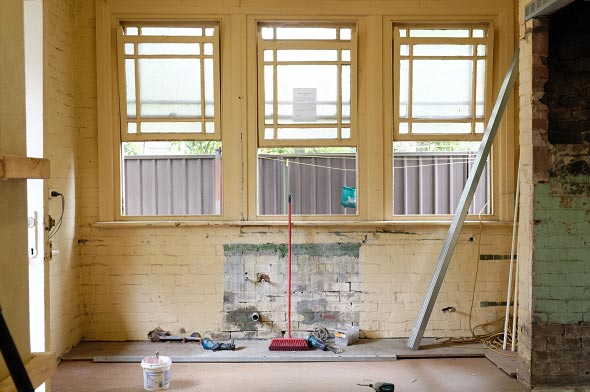What are your opinions on Fire And Water Damage Prevention?

Water gives life, water invasion on parts where it's not expected to be can result in damage. It can peel away surfaces as well as wear down the structure if the water saturates right into your structure. Mold and mildew and mildew likewise grow in a moist setting, which can be unsafe for your health. Residences with water damages scent old and also musty.
Water can originate from lots of sources such as typhoons, floodings, ruptured pipes, leaks, and drain concerns. In case you experience water damages, it would certainly be excellent to know some safety and security preventative measures. Below are a few guidelines on just how to handle water damages.
Do Prioritize Home Insurance Protection
Water damage from flooding dues to hefty winds is seasonal. However, you can also experience an abrupt flooding when a malfunctioning pipe instantly bursts into your residence. It would certainly be best to have home insurance that covers both acts of God such as all-natural calamities, and emergencies like broken plumbing.
Do Not Fail To Remember to Turn Off Utilities
In case of a catastrophe, especially if you stay in a flood-prone area, it would certainly be a good idea to turn off the main electrical circuit. This cuts off power to your entire home, protecting against electric shocks when water can be found in as it is a conductor. Don't fail to remember to transform off the primary water line valve. Furniture will certainly relocate about as well as cause damages when floodwaters are high. Having the main valve shut down stops additional damages.
Do Remain Proactive and Heed Climate Notifies
Tornado floodings can be very unforeseeable. If there is a background of flooding in your neighborhood, stay aggressive and also prepared. Pay attention to discharge warnings if you live near a river, creek, or lake . Obtain belongings from the first stage and cellar, after that placed them on the greatest feasible level. Doing so lowers possible home damages.
Don't Ignore the Roof
You can avoid rain damage if there are no openings and leakages in your roof covering. This will protect against water from streaming down your walls as well as soaking your ceiling.
Do Pay Attention to Little Leakages
A ruptured pipeline does not happen overnight. You may see gurgling paint, peeling off wallpaper, water streaks, water discolorations, or trickling noises behind the walls. Have your plumbing repaired prior to it results in massive damages.
Do Not Panic in Case of a Ruptured Pipe
Maintaining your clearheadedness is crucial in a time of crisis. Stressing will only compound the trouble because it will stifle you from acting fast. Timing is crucial when it comes to water damage. The longer you wait, the even more damages you can anticipate. Thus, if a pipeline bursts in your residence, right away turned off your primary water shutoff to cut off the source. Then disconnect all electric outlets in the area or shut off the circuit breaker for that part of your home. Call a respectable water damages restoration expert for support.
Water offers life, water intrusion on parts where it's not expected to be can result in damages. Homes with water damages odor old as well as stuffy.
Water damages from flooding fees to hefty winds is seasonal. You might see gurgling paint, peeling wallpaper, water touches, water stains, or trickling sounds behind the walls. When it comes to water damages, timing is key.
Some Do's & Don't When Dealing with a Water Damage
DO:
Make sure the water source has been eliminated. Contact a plumber if needed. Turn off circuit breakers supplying electricity to wet areas and unplug any electronics that are on wet carpet or surfaces Remove small furniture items Remove as much excess water as possible by mopping or blotting; Use WHITE towels to blot wet carpeting Wipe water from wooden furniture after removing anything on it Remove and prop up wet upholstery cushions for even drying (check for any bleeding) Pin up curtains or furniture skirts if needed Place aluminum foil, saucers or wood blocks between furniture legs and wet carpet Turn on air conditioning for maximum drying in winter and open windows in the summer Open any drawers and cabinets affected for complete drying but do not force them open Remove any valuable art objects or paintings to a safe, dry place Open any suitcases or luggage that may have been affected to dry, preferably in sunlight Hang any fur or leather goods to dry at room temperature Punch small holes in sagging ceilings to relieve trapped water (don't forget to place pans beneath!); however, if the ceiling is sagging extremely low, stay out of the room and we'll take care of it DO NOT:
Leave wet fabrics in place; dry them as soon as possible Leave books, magazines or any other colored items on wet carpets or floor Use your household vacuum to remove water Use TV's or other electronics/appliances while standing on wet carpets or floors; especially not on wet concrete floors Turn on ceiling fixtures if the ceiling is wet Turn your heat up, unless instructed otherwise

We were made aware of that editorial on Ways to Reduce The Risk Of Fire And Water Damage from an acquaintance on a different domain. Sharing is nice. Helping others is fun. Kudos for your time. Visit us again soon.